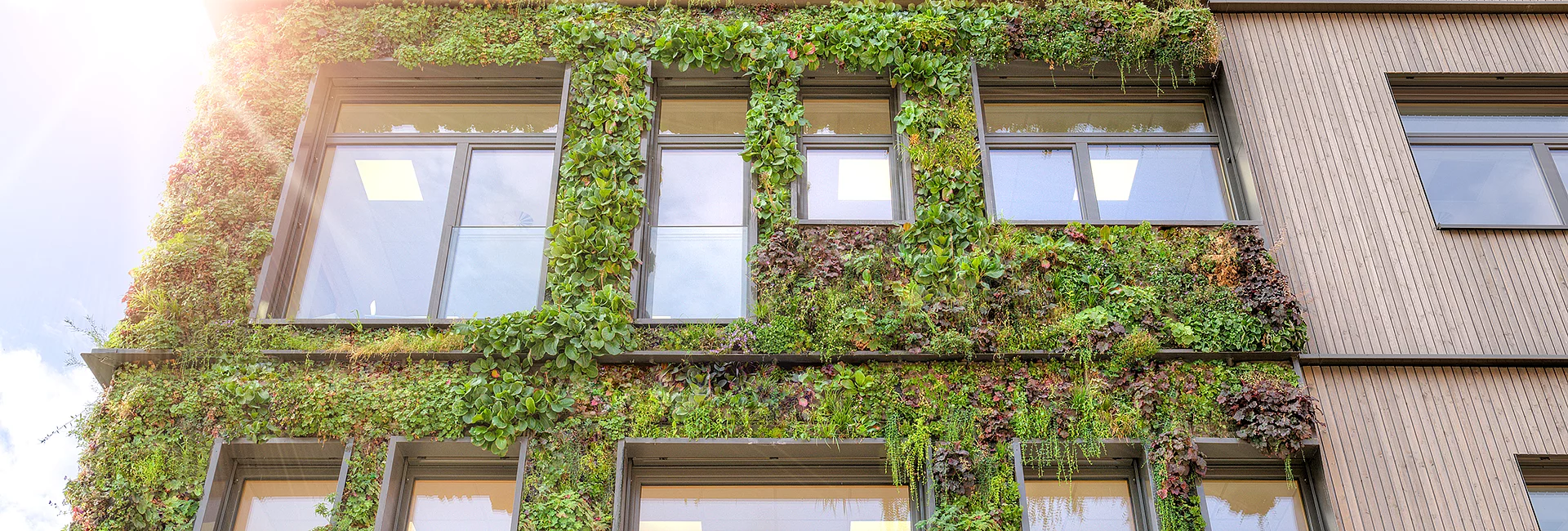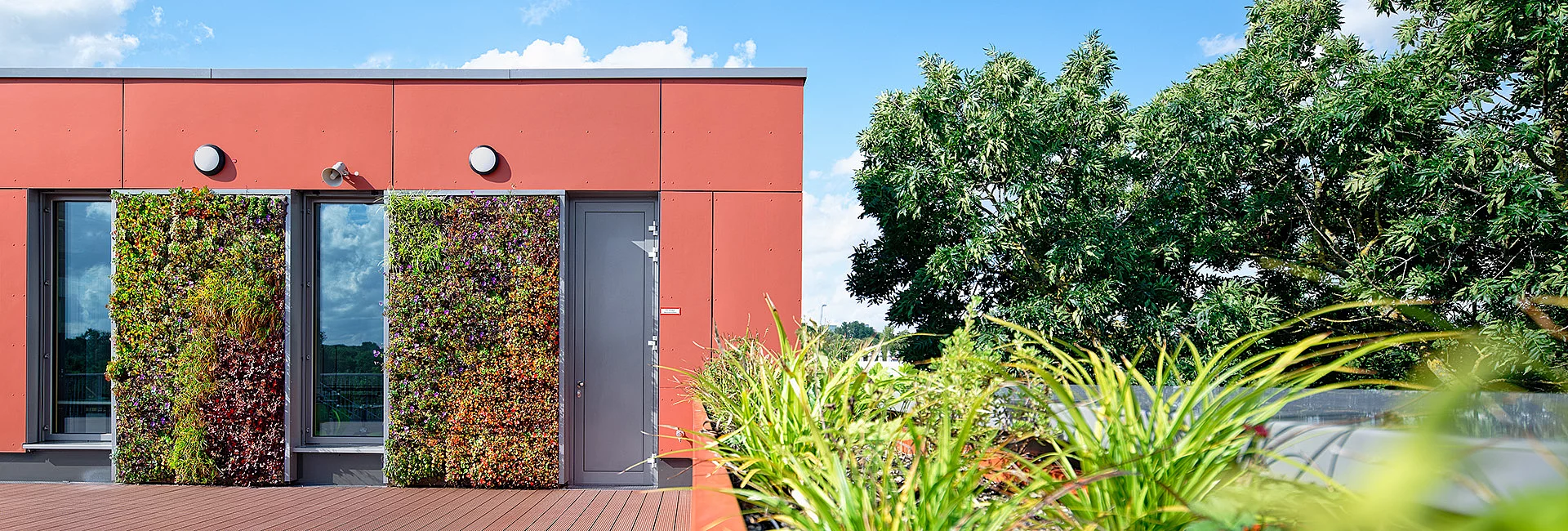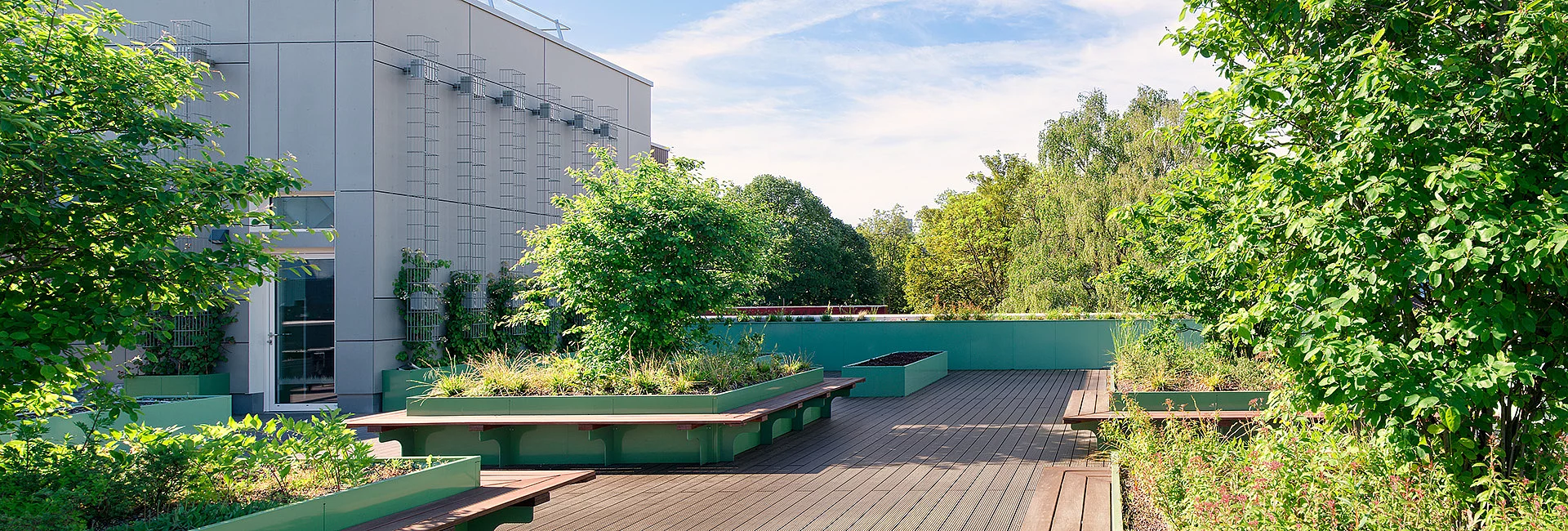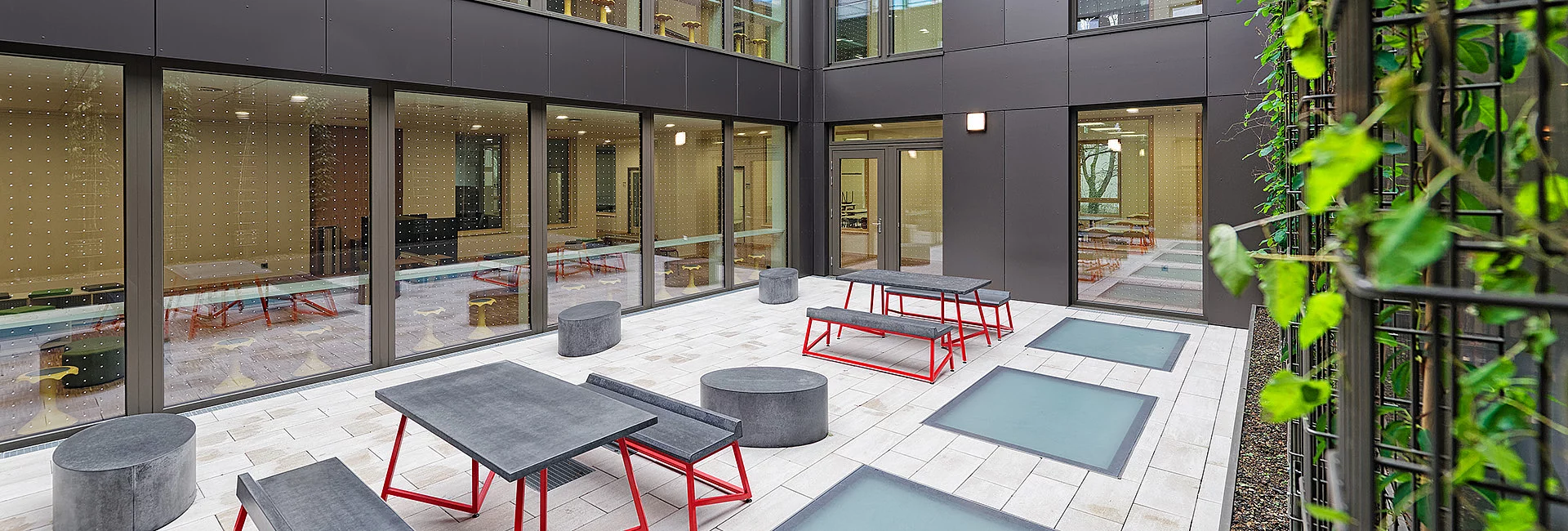
Sustainable building
In order to build sustainably, it is not enough to focus solely on energy efficiency during operation. The production of building materials in particular, as well as construction and dismantling, cause considerable energy consumption and have a major impact on a building's environmental footprint. Sustainability in construction means considering the entire building over its entire life cycle - from planning and material selection to utilisation and possible dismantling.
In our day-to-day work along all stages of the supply chain, from the procurement of resources to the finished building, we are guided by the three aspects of green building. Below we explain what ecological, economic and social sustainability looks like in our company.
Aspects of the ecological quality of modular buildings
Aspects of the economic quality of modular buildings
Aspects of the social quality of modular buildings
The choice of building materials plays a central role when it comes to sustainable construction. Steel and timber are among the most important materials, particularly for load-bearing structures and modular construction. But how sustainable are they reall
Due to its high load-bearing capacity, dimensional accuracy and the possibility of industrial prefabrication, steel is an established building material worldwide, particularly in modular and systematised construction. At the same time, it is one of the most frequently recycled materials: around 99% of the steel used in construction is recovered, around 88% of which is melted down and reused as new steel. This means that a large proportion of today's steel products are already recycled material - a significant advantage in terms of the circular economy and sustainable resource utilisation.
Wood is a natural, renewable raw material and is one of the most sustainable building materials available today. During its growth, a tree absorbs carbon dioxide from the atmosphere and stores it for the long term; even after processing, this CO2 remains bound in the wood. Compared to energy-intensive building materials such as concrete or steel, wood scores with an excellent ecological balance. Its extraction and processing require significantly less energy, which considerably reduces CO2 emissions. At the same time, the building material enables precise prefabrication, which makes efficient use of resources and minimises waste. Furthermore, timber can be integrated particularly well into modular building concepts. Modern timber construction combines flexibility, durability and a healthy indoor climate. At the end of its useful life, wood can either be reused, recycled or utilised. All in the spirit of the circular economy.
Despite everything, conventional steel production is considered to be CO2 intensive. Around 75% of the steel produced worldwide is still produced in blast furnaces, where iron ore is processed using large amounts of energy and large quantities of CO2 are released in the process. However, change is in full swing, driven by the climate targets of the Paris Agreement and the increasing demand for sustainable building materials. Green steel represents a paradigm shift in the industry. It is produced by recycling up to 100% steel scrap in electric arc furnaces. These enable steel production with significantly lower energy requirements. Co2 emissions can thus be significantly reduced.
The cycle of modular construction
The construction industry is facing a fundamental change. In view of scarce resources, rising CO2 emissions and the growing amount of waste, the circular economy is becoming increasingly important. It aims to plan and use materials and components in such a way that they do not become waste after use, but are returned to the cycle as reusable raw materials or as components for new buildings. Modular construction offers the ideal conditions for this. Using prefabricated construction elements, buildings are planned in such a way that they are not demolished at the end of their useful life, but are dismantled and broken down into their individual parts.
Our modular buildings - certified sustainable by the DGNB
The German Sustainable Building Council - DGNB e.V. - is an organisation that has set itself the task of developing and promoting ways and solutions for the sustainable planning, construction and use of buildings. At the heart of the DGNB is the association with around 1,200 members, including ALHO.
ALHO supports the values and principles of the DGNB and would like to make a contribution to sustainability in construction through its membership. The DGNB is committed to sensitising the public to sustainable construction methods. This is why the DGNB certifies buildings that provide proof of the sustainability of the building. At ALHO, not only was a single building honoured, but an entire construction system received the DGNB multiple gold certificate as proof of sustainable construction.
The DGNB certification system for sustainable construction serves to objectively describe and evaluate the sustainability of buildings and neighbourhoods. The quality of DGNB-certified buildings is assessed comprehensively over the entire building life cycle. The system considers all key aspects of sustainable construction and the sustainability of buildings. In addition to the topics of ecology, economy, socio-cultural and functional aspects from the three-pillar model, the areas of technology, processes and location are also assessed.
The DGNB awards the "Sustainable Building Seal of Approval" in the quality levels platinum, gold, silver and bronze. ALHO has been awarded the multiple gold certificate with its building system.



